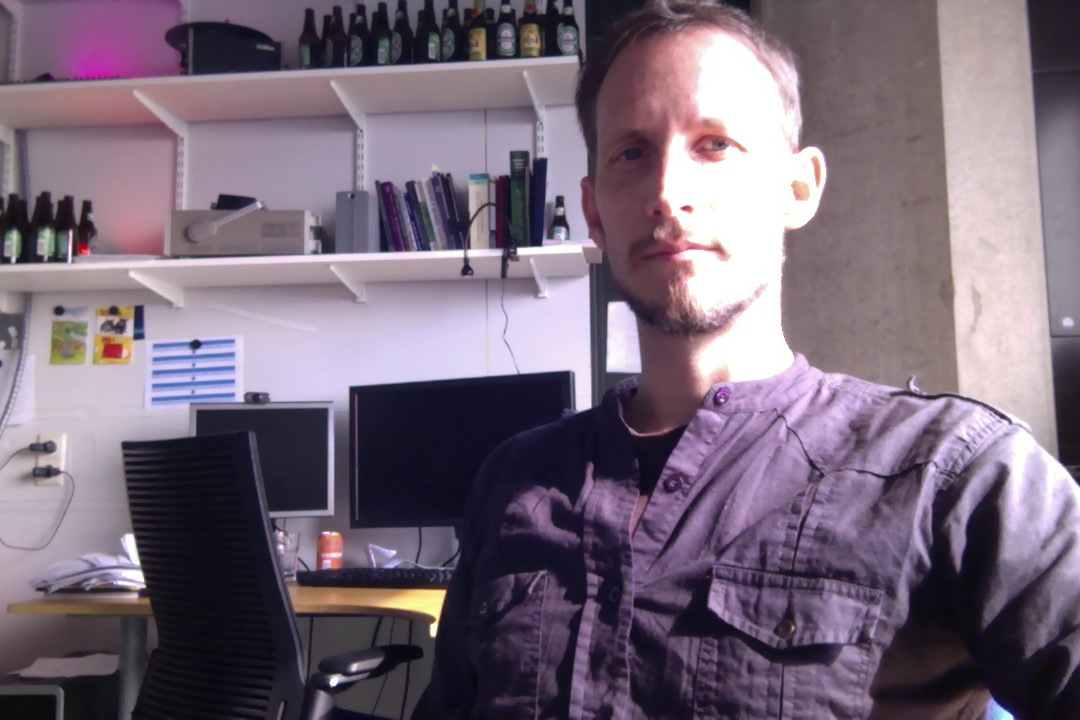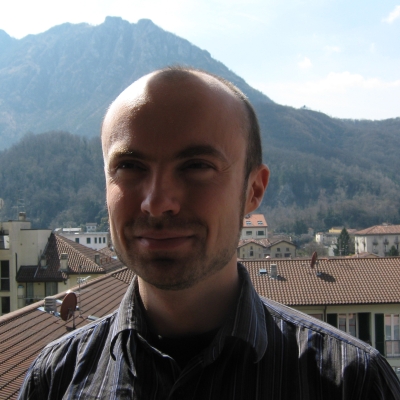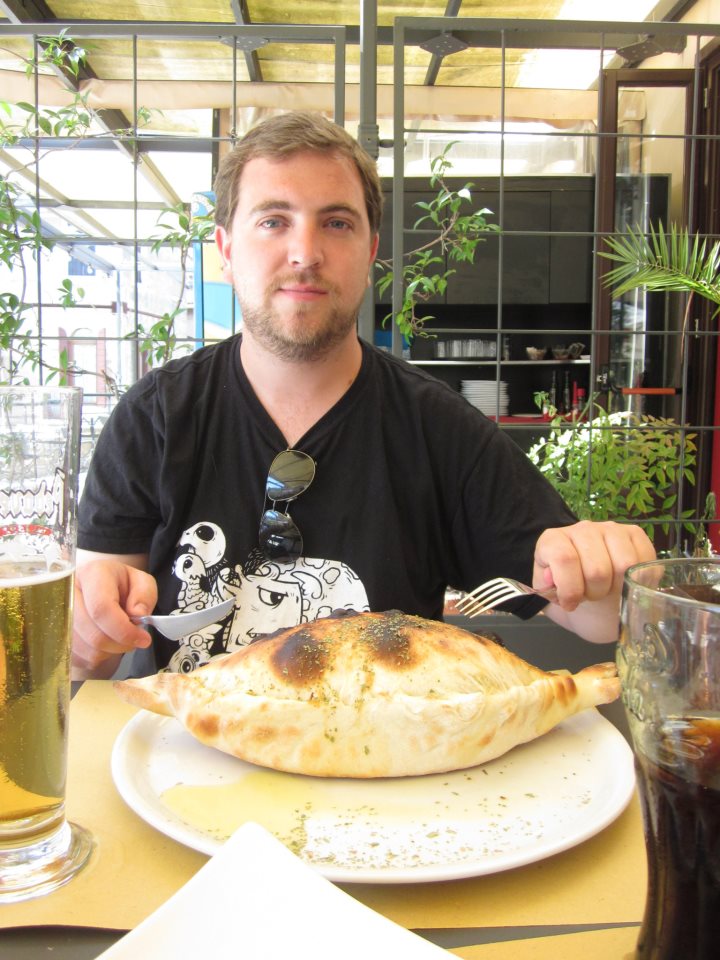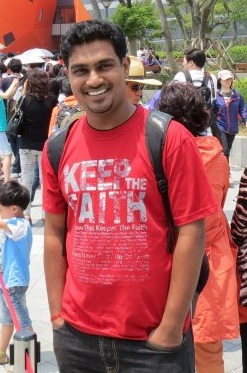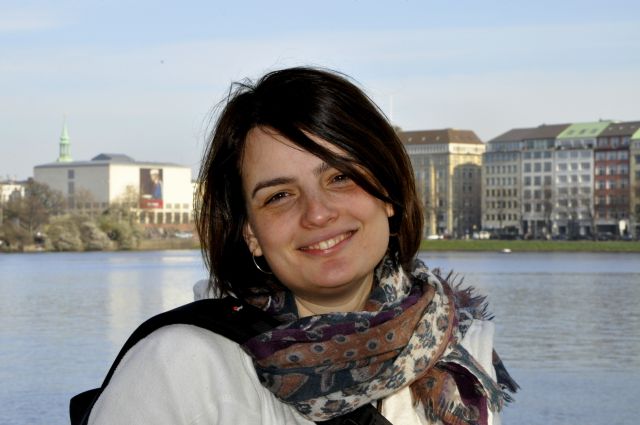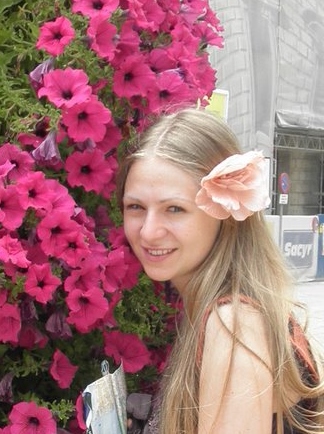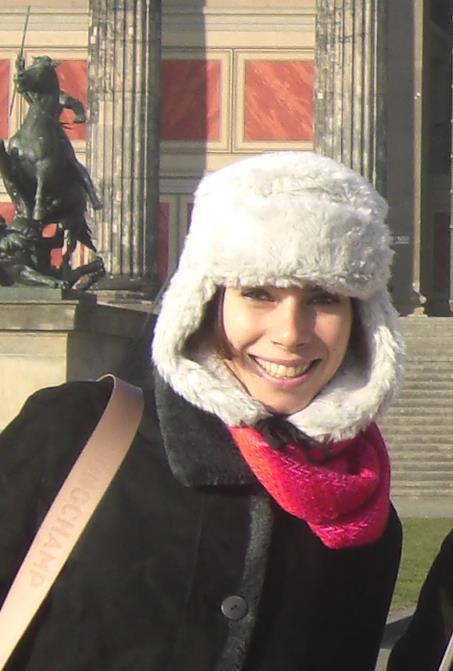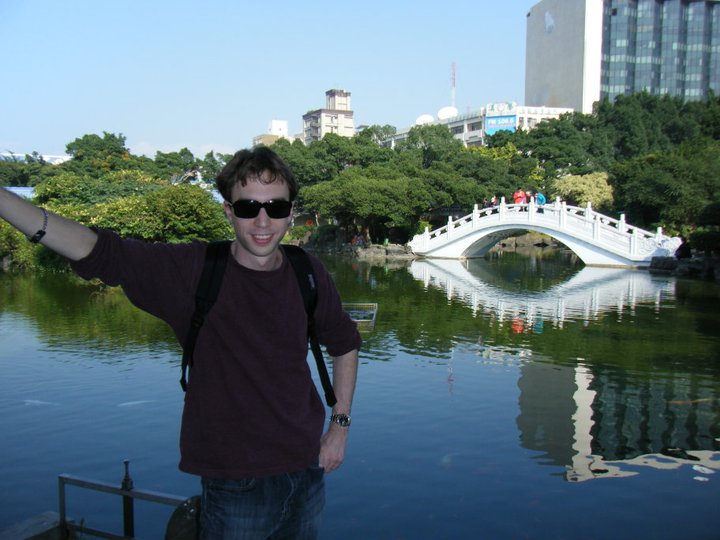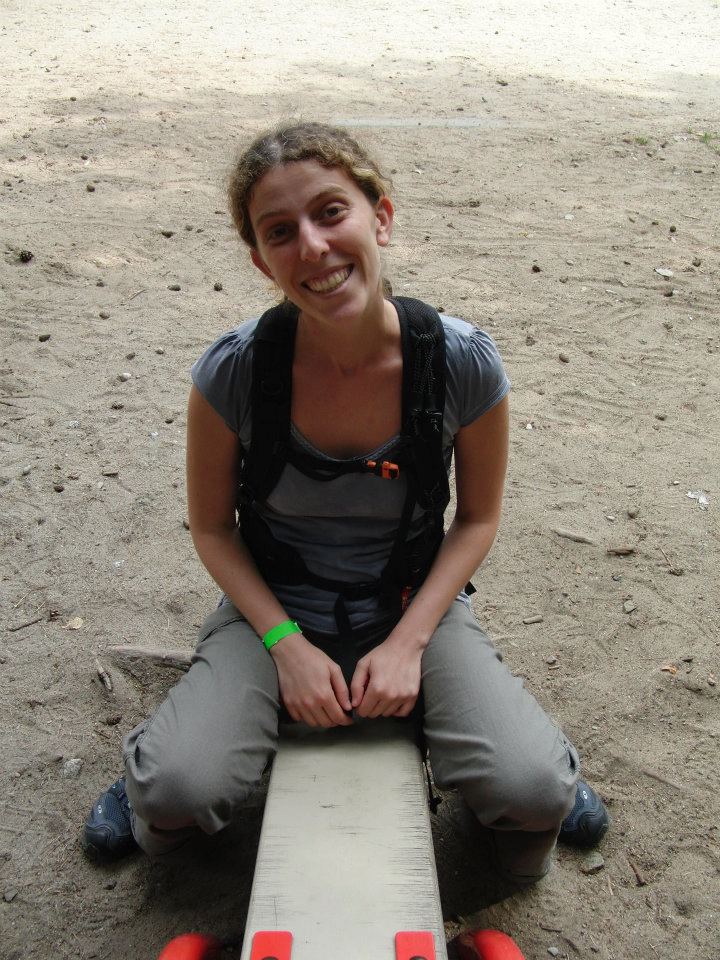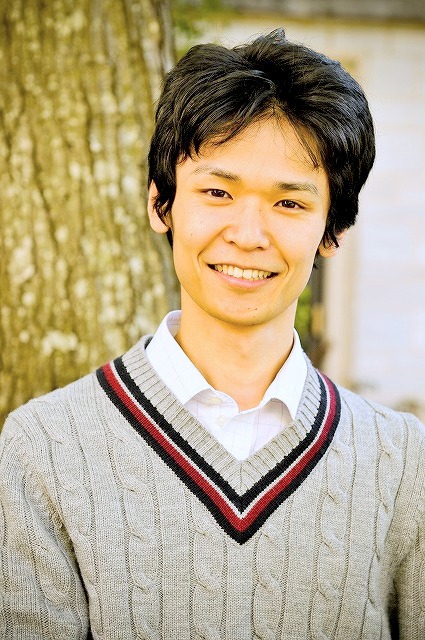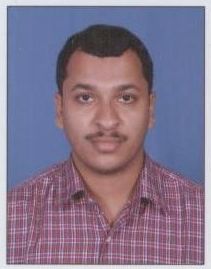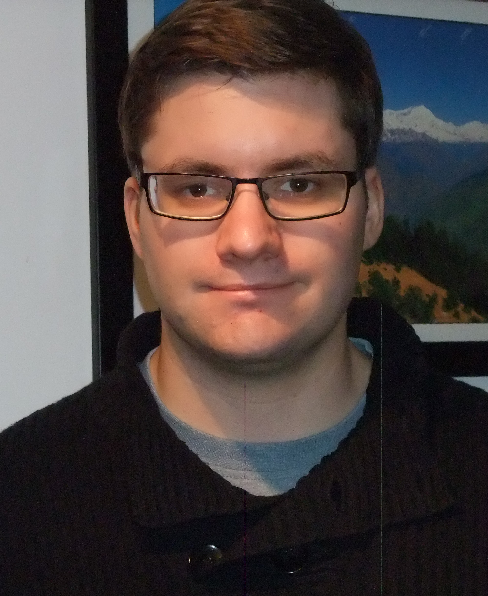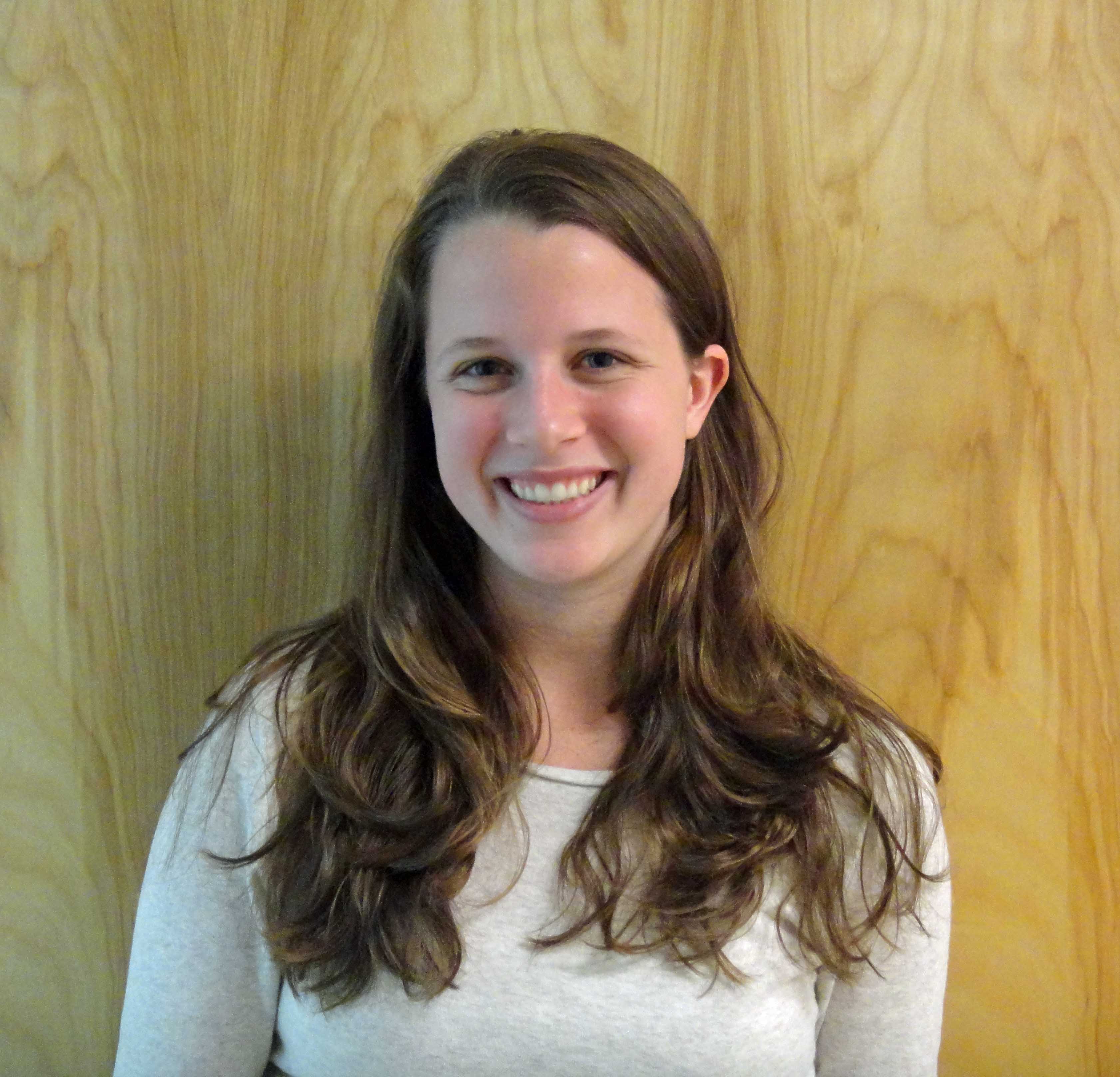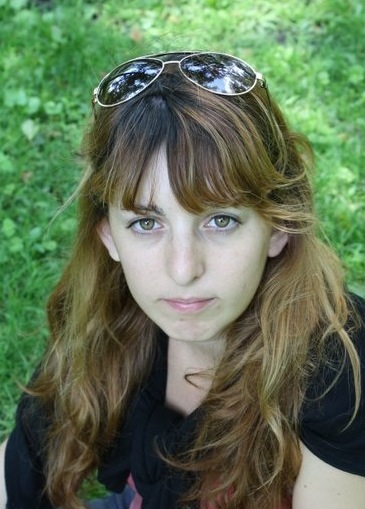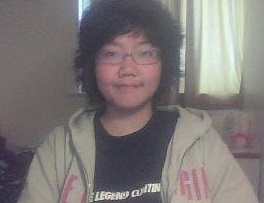People
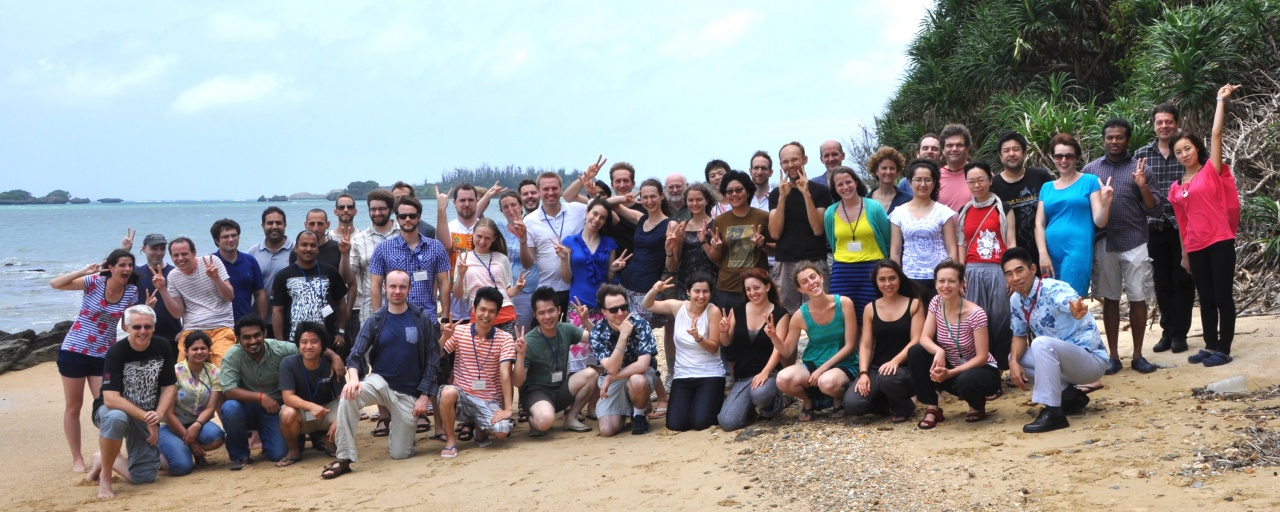
Lecturers
- Arleo, Angelo
- Bernd, Kuhn
- Blackwell, Avrama
- Deisseroth, Karl
- Deneve, Sophie
- De Schutter, Erik
- Doya, Kenji
- Einevoll, Gaute
- Hasselmo, Michael
- Holmes, William (Bill)
- Kawato, Mitsuo
- Pillow, Jonathan
- Stephens, Gregory
- Wickens, Jeff
- Yazaki-Sugiyama, Yoko
Tutors
- Funamizu,Akihiro
- Garrido,Marta I.
- Grabska-Barwinska,Agnieszka
- Hong,Sungho
- Negrello,Mario
- Neymotin,Sam
- Selandipalayam,Selvakumar
- Yger,Pierre
Students
- Acerbi,Luigi
- Anderson,Paul
- Appukuttan,Shailesh
- Arlt,Charlotte
- Augustin,Hrvoje
- Balta Beylergil,Sinem
- Bihun,Marzena
- Bouchacourt,Flora
- Braun,Andreas
- Brinkman,Braden
- DeCostanzo,Anthony
- Doran,Carolina
- Eguchi,Akihiro
- Eldar,Eran
- Gironés,Zahara
- Hartmann,Christoph
- Huang,Jian-Jia
- Kajikawa,Koichiro
- Le Mouel,Charlotte
- M,SANJAY
- Madl,Tamas
- Mohapatra,Namrata
- Newton,Adam
- Nygren,Erik
- Seely,Jeffrey
- Shephard,Clarissa
- Teleńczuk,Maria
- Yarden,Yasmin
- Zhang,Suyi
Lecturers
Arleo, Angelo
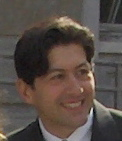
|
Affiliation: |
Université Pierre & Marie Curie, France |
| URL: | http://www.anc.upmc.fr/aarleo.html?mail |
|
About: |
I am interested in adaptive neural computation and brain information processing. I have been focusing on the neural coding mechanisms allowing animals and humans to interact with the environment through manifold sensory modalities, to learn contextual representations mediating high-level cognitive functions. The rationale is to cross-link different neural levels, from single cell to system processing. Such an integrative approach relies on the combination of theory (mathematical analysis and modeling) and experiments (electrophysiological and behavioural data). Also, the validation of models through robotic implementations inscribes some aspects of my research within a neuroengineering framework. |
Kuhn, Bernd
|
Affiliation: |
OIST |
| URL: | https://groups.oist.jp/onu |
|
About: |
In my lab we focus on cellular imaging in awake mice. My main interest is dendritic information processing. |
Blackwell, Avrama
|
Affiliation: |
George Mason University, USA |
| URL: | http://psychology.gmu.edu/people/avrama |
|
About: |
I received a B.S. in Biomedical engineering from Boston University in 1981. Subsequently I attended the University of Pennsylvania where I earned a M.S. in Systems Engineering, a PhD in Bioengineering and a V.M.D. in veterinary medicine. My research focuses on the biophysical and biochemical mechanisms of long term memory storage using computational and experimental techniques. I have developed software libraries for modeling calcium dynamics using the GENESIS simulation environment. More recently I have developed software for computationally efficient, stochastic simulation of signalling pathways in neuronal dendrites and spines. I develop computational models of calcium dynamics and signalling pathways underlying synaptic plasticity, and then use model simulations combined with electrophysiology experiments to investigate questions of spatial specificity and temporal pattern discrimination. |
Deisseroth, Karl

|
Affiliation: |
Stanford University, USA |
| URL: | http://www.stanford.edu/group/dlab/ |
|
About: |
My laboratory has worked on developing and applying high-resolution tools for controlling (optogenetics.org) and mapping (clarityresourcecenter.org) specific well-defined elements within intact and fully-assembled biological systems. We continue to develop and apply these and other tools (integrated with optical, electrophysiological, computational, molecular, and behavioral approaches) for the study of neural physiology and behavior in freely-moving mammals. We are interested both in natural behaviorally-relevant neural circuit dynamics, and in pathological dynamics underlying neuropsychiatric disease symptomatology and treatment. My laboratory is based in the Bioengineering Department in the basement of the James H. Clark Center at Stanford. I also operate an optogenetics training facility (the Optogenetics Innovation Laboratory built on the second floor of the Clark Center with support from the BioX program at Stanford), and our 1050B Arastradero site where many of our newer technologies are being developed (the Arastradero campus is part of the Stanford CNC program and the site of CLARITY development and training). |
Deneve, Sophie
|
Affiliation: |
Ecole Normale Supérieure, France |
| URL: | http://www.gnt.ens.fr/people.php?id=1 |
|
About: |
Dealing with uncertainties is necessary to the survival of any living organism. Recent years have seen the growing use of models formalizing sensory perception, motor control or behavioral strategies as probabilistic inference tasks. Excitable neural structures face similar problems than behaving organisms: they receive noisy and ambiguous inputs, must accumulate evidence over time, combine unreliable cues, and compete with other neurons representing alternative interpretations of the sensory input. In my group, we apply such normative models, particularly Bayesian networks, in order to further our understanding of the function and dynamics of biological neural networks. The originality of this research is that these models are applied at the level of microscopic structures such as single synapse, neurons or microcircuits, whose computations are strongly constrained by neural biophysics and dynamics. In particular, single spikes are our elementary unit of coding and meaning. |
De Schutter, Erik
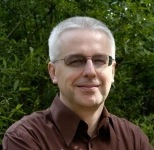
|
Affiliation: |
OIST |
| URL: | https://groups.oist.jp/cnu |
|
About: |
I have been teaching for more than 10 years at European CNS summer schools and was part of the last six OCNCs. It is always exciting to meet the diverse groups of highly motivated young scientists attending our courses. Summer courses have an important function in teaching computational methods and approaches, and in establishing social networks among the participants. Ideally every neuroscientist, including experimentalists and clinicians, should attend a CNS course because computational methods have become essential tools to understand the complex systems we are studying. There is a broad range of modeling approaches available. I have specialized in data-driven, bottom-up methods that are more accessible to experimentalists because they are mainly parameter driven. This includes large compartmental models of neurons with active dendrites, networks with realistic connectivity using conductance based neuron models and reaction-diffusion models of molecular interactions. I will not have time to present much of our research, but feel free to ask me or my collaborators about our work! Most of the work in my lab concerns the cerebellum, including its main neuron the Purkinje cell. |
Doya, Kenji
|
Affiliation: |
OIST |
| URL: | https://groups.oist.jp/ncu |
|
About: |
Kenji Doya took BS in 1984, MS in 1986, and Ph.D. in 1991 at U. Tokyo. He became a research associate at U. Tokyo in 1986, U. C. San Diego in 1991, and Salk Institute in 1993. He joined ATR in 1994 and became the head of Computational Neurobiology Department, ATR Computational Neuroscience Laboratories in 2003. In 2004, he was appointed as the principal investigator of Neural Computation Unit, Okinawa Institute of Science and Technology (OIST) and started Okinawa Computational Neuroscience Course (OCNC) as the chief organizer. As OIST re-established itself as a graduate university in 2011, he became a professor and the vice provost for research. He serves as the co-editor in chief of Neural Networks from 2008. He is interested in understanding the functions of basal ganglia and neuromodulators based on the theory of reinforcement learning. |
Einevoll, Gaute
|
Affiliation: |
Norwegian University of Life Sciences |
| URL: | http://arken.umb.no/~gautei/index_english.html |
|
About: |
I come from the Computational Neuroscience Group at the Norwegian University of Life Sciences at Ås outside Oslo. We are interested in various aspects of multiscale modelling of sensory processing in thalamic and cortical networks. In this lecture I will talk about an aspect of this which I think has been underemphasized by our community so far, namely the “modeling of what you can measure”. This is important as detailed quantitative comparison between models and experiments are crucial for making progress in our field, and this in turn requires precise physical modelling of the measurement itself. Here I will focus on the commonly measured local field potential (LFP), that is, the low-frequency part of electrical signals recorded inside the brain. |
Hasselmo, Michael
|
Affiliation: |
Boston University, USA |
| URL: | http://www.bu.edu/hasselmo/ |
|
About: |
Michael Hasselmo is a Professor at Boston University in the Department of Psychology and the Graduate Program for Neuroscience. He is principal investigator on two NIMH R01 grants and an ONR MURI award. Research in his lab includes whole cell patch recordings to analyze intracellular dynamics in brain slice preparations of cortex, and extracellular recording of unit activity including grid cells and head direction cells. His modeling includes network level models and detailed biophysical models. Recent publications address the function of theta rhythm oscillations in generation of grid cell firing and encoding of information, building on his earlier models of the role of acetylcholine and oscillations in regulating encoding dynamics. Michael E. Hasselmo graduated summa cum laude from Harvard College, received a Rhodes scholarship and completed a D.Phil. at Oxford University. After a post-doctoral fellowship at the California Institute of Technology, he was on the faculty at Harvard University before moving to Boston University. He has published over 120 articles in journals including Science, Nature, Journal of Neuroscience, Hippocampus, Journal of Neurophysiology, Neuron, Trends in Cognitive Sciences and Trends in Neurosciences. |
Holmes, William (Bill)
|
Affiliation: |
Ohio University, USA |
| URL: | http://bios.ohio.edu/archives/author/holmes |
|
About: |
I do detailed models at three levels: the neuron level, the synapse level, and the biochemical/molecular level, using a variety of software, to understand how long-term potentiation (LTP) is induced in the hippocampus. Recently I started modeling vestibular afferents which might seem to be less complicated, but which present a different set of problems. I also have a long-standing interest in cable theory dating back to my postdoc days working with Wilfrid Rall. Modeling neurons can be frustrating at times, but the occasional ""eureka"" moments make it all worthwhile! |
Kawato, Mitsuo
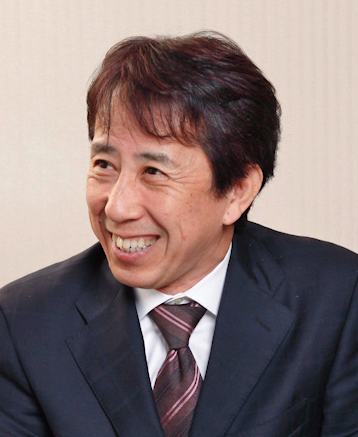
|
Affiliation: |
ATR, Japan |
| URL: | http://www.cns.atr.jp/~kawato/ |
|
About: |
I have been working in computational neuroscience for 30 years, and am still very much excited to be involved in its development. Brain-mind causal relationship is the most important hypothesis of the neuroscience. How to prove this hypothesis is the key of my talk. |
Pillow, Jonathan
|
Affiliation: |
University Texas Austin, USA |
| URL: | http://pillowlab.cps.utexas.edu/~pillow/ |
|
About: |
I lectured at the very first OCNC in 2004, but was not invited back for any of the subsequent courses until this year (when the memory of that first lecture had faded sufficiently from the organizers' synapses). During the intervening years, in anticipation of this happy event, I have practiced my teaching skills in the European Advanced Course in Computational Neuroscience (ACCN), the Methods in Computational Neuroscience (MCN) course at Woods Hole, and the Berkeley course in mining and modeling of neuroscience data. My research focuses largely on statistical methods for understanding the neural code in single neurons and neural populations, and my lab also works on Bayesian models of human sensory perception. I'm very excited about sharing my enthusiasm for (what I feel to be) the virtues of a Bayesian statistical modeling perspective for trying to figure out the brain. I think summer courses provide a unique environment for developing new ideas and for building connections between scientists, but also for having some fun together. I will be around for the last week of the course, and look forward to having the chance to do all of those things. |
Stephens, Gregory
|
Affiliation: |
OIST |
| URL: | https://groups.oist.jp/bptu |
|
About: |
I am a theoretical biophysicist seeking to understand organism-level behavior. Split between OIST and the Vrije Universiteit Amsterdam, my research explores a diverse set of problems ranging from the motion of small organisms to the dynamics of human cognition. In all of my efforts, unlike traditional approaches that restrict behavior or it's neural correlates from the onset, I combine the variation of biological systems under natural conditions with statistical physics, information theory and dynamical systems to search directly for simple, functional understanding. Trained in early universe cosmology, as I switched fields I was fortunate to experience a course such as this one and hope you will enjoy a similarly remarkable experience. |
Wickens, Jeff
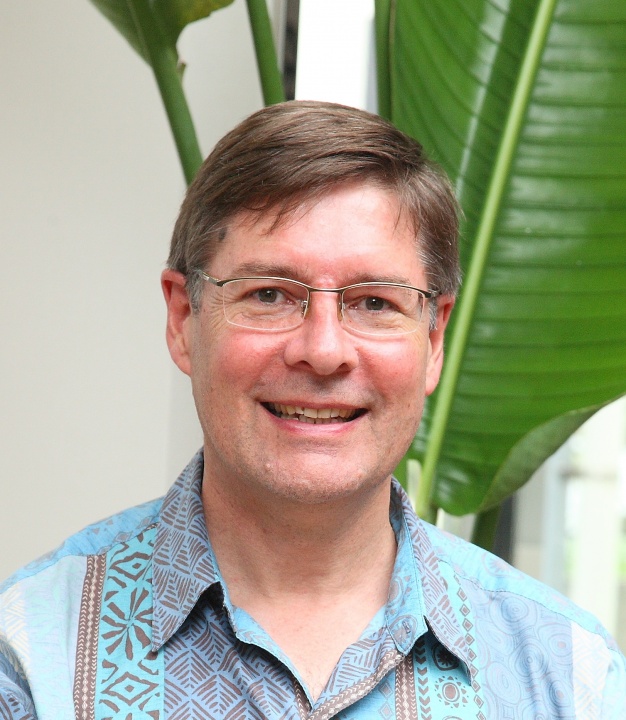
|
Affiliation: |
OIST |
| URL: | https://groups.oist.jp/nru |
|
About: |
Jeff Wickens is a Professor at the Okinawa Institute of Science and Technology (OIST) Graduate University, where he is also head of the Neurobiology Research Unit, and Dean of the OIST Graduate School. Dr. Wickens initially trained as a medical doctor and worked clinically for several years before undertaking a PhD in computational neuroscience at the University of Otago, New Zealand. His thesis, A Theory of the Striatum, was published as a monograph in 1993. He held faculty positions at Otago until 2007, and was director of the New Zealand Health Research Council Program on Behavioural and Cellular Mechanisms of Hyperactivity and Movement Disorders, and a member of the Scientific Advisory Council of the New Zealand Neurological Foundation. He is a member of the editorial board for Journal of Neuroscience Methods, Network, Computation in Neural Systems, and Basal Ganglia. He has published 90 research papers, reviews and book chapters. |
Yazaki-Sugiyama, Yoko
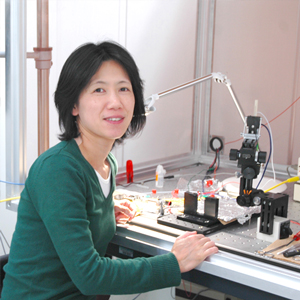
|
Affiliation: |
OIST |
| URL: | https://groups.oist.jp/nmcpu |
|
About: |
My research interest is to understand the brain function which allows animal to behave properly. Our research unit currently working on the neuronal mechanism of the developmental ‘critical period’ where the neurons are plastic and actively shaping their network by using bird song learning. Why do birds learn to sing only in the limited time window ? We are exploring the mystery of birds’ brain to answer the questions. |
Tutors
Funamizu, Akihiro
|
Affiliation: |
JSPS Reseach Fellow / OIST |
|
About: |
Welcome to Okinawa!! I am interested in the brain mechanism of decision making. I am currently working on the modeling of rodents behaviors with reinforcement learning and Bayesian theorem. I also do some extra-cellular recordings and two-photon microscopy in awake behaving mice. |
Garrido, Marta I.
|
Affiliation: |
The University of Queensland, Queensland Brain Institute |
|
About: |
I am interested in the brain mechanisms and the connectivity underpinnings of perception. In particular, I seek to understand how we learn and detect irregularities in environmental statistics. To address these questions I use magnetoencephalography (MEG), electroencephalography (EEG), psychophysics, and computational modelling. |
Grabska-Barwińska, Agnieszka
|
Affiliation: |
The Gatsby Computational Neuroscience Unit |
|
About: |
Computational neuroscience is for me the pinnacle of natural sciences, with math and physics providing a sound support, systematic approach to the questions central to philosophy, psychology and, for that matter, every adolescent mind: Who am I? What am I? How am I? It's crazy to think one can keep asking these questions and actually advance the scientific understanding of self, by sitting down with a pen and a paper (/a keyboard and a screen). Naturally, little advance would be made without support from biology, engineering and skilled experimentalists, but the motivating force is often just that - an analytical, self-analysing mind. |
Hong, Sungho
|
Affiliation: |
Computational Neuroscience Unit, OIST |
|
About: |
Hi everyone, welcome to Okinawa! I am interested in how cellular properties influence the behavior and information processing of a network. I am also a big fan of statistical techniques for finding patterns in the noisy data. |
Negrello, Mario
|
Affiliation: |
Erasmus MC |
|
About: |
Good news everyone, we're meeting in Okinawa for great science, blue skies, and vast horizons! I am what you could call a veteran here, having first come as a student participant, later as a local, then as a tutor, role which i will now play for the 3rd (!) time. Next time as a lecturer, he says hopefully =]. My work ranges from cognitive science, through evolutionary robotics, machine learning, and computational neuroscience, and more currently experimental work. Recent years, I have taken upon myself to solve the cerebellum. One more OCNC and I should have it! |
Neymotin, Sam
|
Affiliation: |
Yale University & SUNY Downstate |
|
About: |
I work in the field of computational neuroscience, where one of the distant aims is to build artificial brains that run in-silico, and can learn to interact with their environment, much as our real brains/bodies do. To this end, I'm filling in some of the biological details that may enable realistic dynamics/behaviors to emerge, by utilizing neuronal data that spans multiple spatial (from molecules to brain regions) and temporal (from microseconds to weeks) scales. |
Selandipalayam, Selvakumar
|
Affiliation: |
Emory University |
|
About: |
I am interested in understanding the neural underpinnings of behavior using computational models in close collaboration with experimentalists. I work on realistic conductance based multicompartmental models. I use various techniques such as nonlinear dynamics, phase response curves, optimization algorithms, spectral analysis and statistical measure of spike train properties in order to do the simulation and understand the dynamics. My present work involves studying the spike train properties of cerebellar Purkinje cells and how information is processed in cerebellar nuclei of an awake mice performing various motor coordination behaviors. In the past i have worked on the dynamics of pulse coupled neural oscillators and phase response curves of bursting neurons. |
Yger, Pierre
|
Affiliation: |
Ecole Normale Supérieure |
|
About: |
I'm a postdoc in Paris, working in plasticity in spiking neuronal networks. More precisely, I'm interested in understanding how information can be stored and retrieved by neurons influenced by ongoing activity. Going from molecular pathways of potentiation and depression to computational principles, there is a long road before getting a clear picture of plasticity in sensory areas, and understanding how spikes can be used to encode memories. |
Students
Acerbi, Luigi
|
Affiliation: |
The University of Edinburgh |
|
About: |
I am a PhD student under the supervision of Sethu Vijayakumar in Edinburgh and Daniel Wolpert in Cambridge. My background is in theoretical physics (statistical mechanics and cosmology, with a soft spot for quantum foundations) and computer science (symbolic dynamics and cellular automata). My current research derived from my interest in three major themes: perception, probability and time. Braiding these strands in a single research project, I have been investigating probabilistic models of time perception, probing the limits of “Bayesian timing” with psychophysical experiments. In Okinawa I will be keen to learn and discuss about other methods and areas of computational neuroscience in order to direct my future research. |
Anderson, Paul
|
Affiliation: |
University of Melbourne |
|
About: |
My broad scientific interest is in the neural underpinnings of consciousness; how and why does phenomenal experience occur? How does our brain generate and sustain its representations of the world? More specifically I work on pharmacological models of schizophrenia, looking at how ketamine alters gamma oscillations and impacts upon information processing and behaviour. |
Appukuttan, Shailesh
|
Affiliation: |
Indian Institute of Technology Bombay |
|
About: |
I am interested in the application of computational techniques to biological research. My current research involves development of 3-D computational models of smooth muscle syncytia and their control via the central and peripheral nervous system. It is aimed at understanding the underlying basis of their electrical activity and resultant functioning. This involves modeling gap junctions to form electrical syncytia, incorporating ion channels and pumps, attributing spatially and temporally distributed pattern of neurotransmission and the analysis of these networks. OCNC would be a platform for me to interact with students, tutors and faculty from around the world engaged in varied neuroscience research. Looking forward to meeting each of you. Cheers! |
Arlt, Charlotte
|
Affiliation: |
University College London, UK |
|
About: |
I am interested in how neural networks encode information about sensory events, how they change with learning and plasticity, and how this eventually gives rise to and modulates behavior. I am intrigued to understand what each element of a neural circuit contributes computationally to information processing and how the elements affect each other’s firing properties in the intact network. |
Augustin, Hrvoje
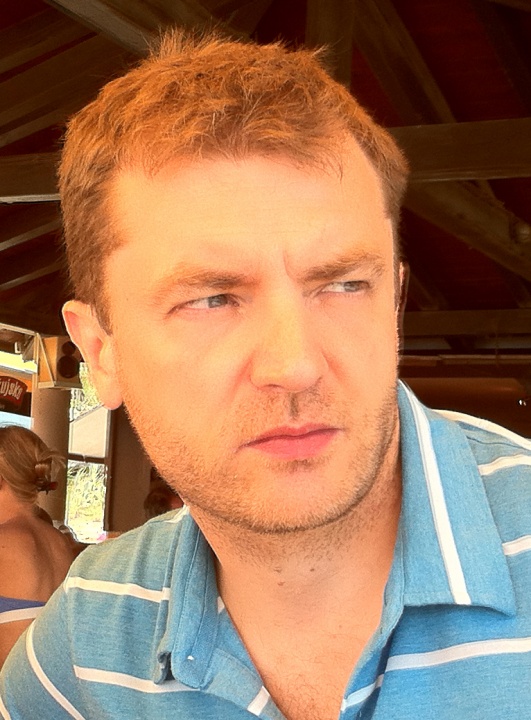
|
Affiliation: |
University College London |
|
About: |
I am a postdoc at University College London with a background in molecular/cell biology and neurophysiology. I study age-related changes in the nervous system of D. melanogaster; our electrophysiological experiments indicate that these changes occur in the escape-response pathway of the fruitfly, and suggest a way to alleviate them. I would like to build a computational model of the pathway with the goal of generating new testable hypotheses about the function of this neuronal circuit. |
Auksztulewicz, Ryszard
|
Affiliation: |
Charité-Universitätsmedizin Berlin; Humboldt-Universität zu Berlin |
|
About: |
I am interested in the neural mechanisms subserving conscious perception. I did my Masters project at the University of Amsterdam in the group of Victor Lamme, the author of the recurrent processing hypothesis, one of the most extensively discussed theories of visual awareness. For the last three years, in my doctoral research in the group of Felix Blankenburg at the Bernstein Center of Computational Neuroscience and the Free University in Berlin, I have been working on corroborating this hypothesis in the somatosensory modality using EEG, fMRI, TMS and computational modelling in healthy participants. |
Balta Beylergil, Sinem
|
Affiliation: |
TU Berlin & BCCN |
|
About: |
I am a third year PhD student at TU Berlin with Prof Obermayer and Prof Heinz. I received my BS degree in Electrical Engineering, and MSc degree from Bogazici University. Even before completing my studies, I realized that I wanted to study neuroscience. My main focus of interest is translational neuroscience, which builds a bridge between theory and clinic. My current research involves computational modeling of reward based learning in alcohol addiction. |
Bihun, Marzena
|
Affiliation: |
University of Edinburgh |
|
About: |
My current research interests aim at understanding how persistent activity can be realised in cell assemblies. I am particularly interested in a network structure and specific forms of connectivity that allow feed-forward propagation of activity. In future I hope to develop a framework to model neural circuits found in hippocampus. At OCNC I wish to broaden my knowledge and skills by exploring the implementation and effects of cellular mechanisms that can also play a role in realising persitent activity. I am looking forward to meeting all the fellow participants and I can't wait to explore the beauty of Japan! |
Bouchacourt, Flora
|
Affiliation: |
Group For Neural Theory, Laboratoire de Neurosciences Cognitives, Ecole Normale Supérieure, Paris, France |
|
About: |
I'm a French first year PhD student. I am interested in cognitive questions, in particular learning and decision making. I intend to delve further into executive control. How is the human brain able to be so flexible, i.e. to explore, adjust and exploit multiple behavioral strategies for a same task, depending on a changing context? I chose a PhD project aiming at understanding the neural implementation of task sets and the plasticity mechanisms leading to their development. I am constructing a biologically constrained rate-based network model of neural activity in the prefrontal cortex under the co-supervision of Dr. Ostojic from Group from Neural Theory and Dr. Koechlin from Frontal Lobe Functions Group in Paris. |
Braun, Andreas
|
Affiliation: |
Centre of Genomic Regulation |
|
About: |
I am interested in understanding how noise affects computations in basic nervous systems. Do simple nervous systems possess an in-built mechanism to filter “meaningless” noise? Does noise necessarily impact behavior negatively? I am currently trying to link noise-induced alterations in neural firing to changes in behavior. |
Brinkman, Braden
|
Affiliation: |
University of Illinois at Urbana-Champaign |
|
About: |
By the start of the course, I will have just earned my Ph.D. in Physics from the University of Illinois at Urbana-Champaign. In the fall I will begin my postdoctoral studies at the University of Washington. My graduate researched involved developing statistical mechanical models of systems which exhibit avalanche-like dynamics, including magnets, earthquake faults, and neuronal tissue. My postdoctoral work will focus more in depth on modeling neurological systems, such as the retinal system, so I am very excited for this opportunity to expand my knowledge of neuroscience and learn from the experts! As a long-term goal, I would like to use my previous experience with collective behaviors in statistical systems to study collective dynamics in neurological systems, including extrapolating from the behavior of small systems to larger systems. I am also looking forward to the opportunity to meet and make connections with scientists from all around the globe, especially East Asia. See you all soon! |
DeCostanzo, Anthony
|
Affiliation: |
RIKEN |
|
About: |
I'm interested in models of memory, at the moment making abstract models of neurogenesis in the hippocampus. In this course I would like to take some of what I learned with the more abstract models that I've worked with and apply it to more detailed models of individual neurons. In particular I'd like to understand how a single cell might supervise a random synaptic weight selection process to minimize the error of it's output. |
Doran, Carolina
|
Affiliation: |
School of Biological Sciences, Bristol University; Champalimaud Neuroscience Program, Champalimaud Foundation |
|
About: |
I am interested in understanding how complex systems can be built from much simpler components. How they come together and build elaborate structure as a collective. On top of that I find insect behaviour fascinating. So for my PhD I decided to combine both interests and study the role of individual ants in collective nest choice by the ant Temnothorax albipennis. Throughout my scientific carrier my experience has come mainly from experimental labs. I think the OCNC is the perfect opportunity to further broaden my skills into theoretical domains. Last but no least I am really looking forward to visit Japan and meet new people. |
Eguchi, Akihiro
|
Affiliation: |
University of Oxford |
|
About: |
I'm interested in a biologically plausible account of visual processing in the brain. The goal is not simply to build models that can outperform other engineering approaches to computer vision. Instead, my aim is to uncover the processing principles by which the brain is able to represent the richness and complexity of natural visual scenes. |
Eldar, Eran
|
Affiliation: |
Princeton University |
|
About: |
My main interest lies in the links between different areas of neuroscience and between neuroscience and other fields (computing, psychology, philosophy). My own work focuses on linking the effects of a particular neurotransmitter (norepinephrine), using computational modeling, to system-level neural and behavioral phenomena. Looking forward to meeting you all! |
Gironés, Zahara

|
Affiliation: |
Instituto de Física Corpuscular / Unit of Neuroscience Information and Complexity |
|
About: |
I am a theoretical physicist. At the moment I am finishing my Ph.D. in cosmology at IFIC (Universidad de Valencia, Spain) and soon I will start a postdoc in computational neuroscience at UNIC (CNRS, Paris). At the beginning of my Ph.D. I was driven by the most fundamental questions that cosmology addresses: what is the structure of the universe, its dynamics, how did it begin and what is its ultimate fate. But as I became more immersed in seeking those answers, I started becoming more and more interested in what I see now as a more fundamental question: what are the mechanisms governing the “observer” that witnesses and constructs this picture of the universe. How does the brain process information from the environment and how does it create a representation of the external world, and how does this internal representation constantly shape and condition our perception of the world. I am interested in the relation between different levels of information processing, on understanding how higher cognitive brain functions (such as attention, perception and decision making) arise from neural network properties. I am specially motivated to explore and develop new mathematical and statistical methods for analyzing higher cognitive brain functions and eventually understanding how they can emerge from the spiking activity of large populations of neurons. |
Hartmann, Christoph
|
Affiliation: |
Frankfurt Institute for Advanced Studies (FIAS), Max Planck Institute for Brain Research |
|
About: |
How does a pile of neurons produce meaningful behavior? I approached this question by studying Cognitive Science, where I was persuaded that embodiment is a wise idea and that neuronal microcircuits are a key on this quest. After a detour to reservoir computing and robot learning, I am now highly interested in expanding the understanding of cortical self-organization since this most probably makes life easier both for the brain to process information and for us to understand it. |
Huang, Jian-Jia
|
Affiliation: |
Graduate Institute of Electronics, National Taiwan University |
|
About: |
I am a PhD student at National Taiwan University, interested in the communication and information processing in neural network. My research focuses on the cerebellar system, would like to find out a possible mechanism participated in the signal transforming from neuron to neuron at electrogenesis level in freely moving animals by using eletro-physiological techniques (single-unit recording). During this workshop, I hope to learn more about the computational neuroscience and improve my knowledge on neuronal interaction. I am also interested in other research areas from everyone and looking forward to meet you all in OKINAWA. |
Kajikawa, Koichiro
|
Affiliation: |
MIT |
|
About: |
I'm looking forward to meeting you at Okinawa this summer! |
Le Mouel, Charlotte
|
Affiliation: |
Ecole Normale Superieure, Paris |
|
About: |
Hi everyone! I can't wait to meet you all and think about neuroscience together this summer, see you soon! |
M., SANJAY
|
Affiliation: |
CHRISTIAN MEDICAL COLLEGE VELLORE, TAMILNADU, INDIA |
|
About: |
I am a Ph.D scholar in Bioengineering at Christian Medical College Vellore, Tamilnadu, India. My research work aims to computationally investigate the excitatory and inhibitory interactions among the neurons of CA3 subfield of hippocampus. The mechanisms of oscillations generated by small network of neurons in this subfield as well as hyperexcitabilities leading to epileptic phenomena are being explored. I wish to develop a biophysical model using NEURON. Through OCNC, I wish to study computational biophysical modelling more in-depth and extend my research to larger neuronal networks. This is my first overseas visit and is an exciting opportunity to meet the eminent faculty members and research scholars working in an area having scope for excellent breakthroughs. I also look forward to have prospective future collaborations. My regards and Best Wishes to all participants! |
Madl, Tamas
|
Affiliation: |
University of Manchester |
|
About: |
I'm a PhD student at the University of Manchester working on a computational model of human spatial memory on a robot. I'm interested in all cognitive sciences, the ""Bayesian brain"", cognitive architectures and the field of Artificial General Intelligence. |
Mohapatra, Namrata
|
Affiliation: |
Goethe University |
|
About: |
I am interested in combining experimental and computational neuroscientific approaches. I would want to develope a novel chloride diffusion model that would incorporate noise and spatial gradients of chloride concentration within complex boundary conditions which would help to know more about general rules that govern spatio-temporal chloride dynamics at inhibitory synapses and their effects on dendritic computation. |
Newton, Adam
|
Affiliation: |
University of Warwick |
|
About: |
My background is mathematics and complex systems, so I am fascinated by the modelling challenges that neuroscience presents. I am particularly interested in the interaction between the relatively slow diffusion of neuromodulators with the fast dynamics of neural networks. My work is about adenosine, a neuromodulator involved in sleep and neuroprotection. I look forward to meeting you all. |
Nygren, Erik
|
Affiliation: |
University of Berne, Computational Neuroscience Group |
|
About: |
I am fascinated by the brains ability to learn and adapt to an ever-changing environment. My research interests are mainly in the area of learning in a supervised or self-supervised manner. In particular I'm interested in the ability to learn motor actions, from a simple movement of a finger to complex tasks such as bird singing or even talking. |
Seely, Jeffrey
|
Affiliation: |
Columbia University |
|
About: |
I am a student at Columbia University in the Center for Theoretical Neuroscience. I work with Mark Churchland and Larry Abbott. I am interested in using dynamical systems as a framework for understanding information processing in the brain. But that's very general. For now, I'm spending most of my time analyzing data from motor cortex, which is quite fun. My favorite early 20th century Russian composer is Prokofiev. |
Shephard, Clarissa
|
Affiliation: |
Georgia Institute of Technology & Emory University |
|
About: |
I am a graduate student in the lab of Garrett Stanley where my work focuses on the encoding of somatosensory information in the rat vibrissa system at the level of the thalamus and the cortex. We combine anesthetized and awake electrophysiological recordings with computational models to address questions of how information about the world is encoded and how this encoding of information can be controlled. |
Teleńczuk, Maria
|
Affiliation: |
Université Pierre et Marie Curie |
|
About: |
Currently I am trying to understand origins of local field potentials in the brain slices of healthy rats and of human epilepsy patients. I would like to complement my experimental work with a model that might increase our understanding of the mechanisms behind the normal state and give insights into mechanisms of pathological states. |
Yarden, Yasmin
|
Affiliation: |
Hebrew University of Jerusalem |
|
About: |
I finished my B.Sc. in physics at Tel Aviv University and later continued to experimental neuroscience for M.Sc. and PhD at the Hebrew University in Jerusalem. I am interested in understanding the cerebellum and specifically I am studying the behavior of deep cerebellar nuclei (DCN) cells in-vivo. |
Zhang, Suyi
|
Affiliation: |
Center for Information and Neural Networks, NICT |
|
About: |
I am curious about how the brain reacts in aversive situations, or more specifically, the ways it perceives, learns, and adapts to adversity. Currently I am trying to dissociate general and specific responses in Pavlovian aversive conditioning through experiments and computational modelling. And I look forward to meeting you all in Okinawa! |















